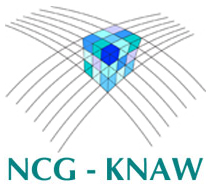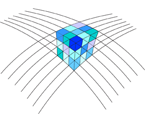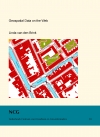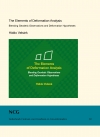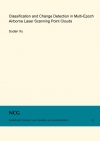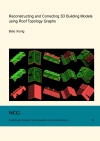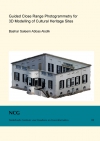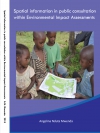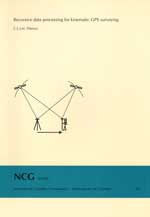
C.C.J.M. Tiberius
Publications on Geodesy 45, Delft, 1998. 264 pagina's.
ISBN-13: 978 90 6132 265 8. ISBN-10: 90 6132 265 0.
Summary
Through the concept of interferometry and using carrier phase measurements, relative positions can be determined very precisely with the Global Positioning System GPS. Carrier phase measurements are made by phase comparison of the generated and received carrier. Due to this technique, an unknown integer number of cycles (ambiguity) is involved in these measurements. Resolving the ambiguities is the key to precise GPS positioning. When the integer (double difference) ambiguities have been successfully resolved, the precision of the relative position is at the 1 cm level or better. The ambiguities are dealt with by the LAMBDA method, the Least-squares AMBiguity Decorrelation Adjustment method, which was introduced in 1993. It features a strict extension of standard least-squares to the integer domain and by the decorrelating reparametrization of the ambiguities, the integer estimation can be made very fast and efficiently. Ambiguity resolution is possible instantaneously, thus based on only one epoch of data, and hence truely On-The-Fly.
In kinematic GPS surveying, the roving receiver visits the locations to be surveyed. This set up allows a high productivity in collecting geometric information. It is convenient to obtain the results of the data processing already in the field while the survey is run, instead of at the home office one day later. In case of insufficient quality, corrective actions can then be taken immediately in the field. The data processing must therefore be recursive. As mechanization the Square Root Information Filter is applied. The SRIF allows estimation and quality control computations to be made in recursion and thus possibly in real-time, in close parallel with the gathering of the data. The quality control comprises the Detection, Identification and Adaptation of errors in the incoming data (outliers, cycle slips). By the DlA-procedure, the effect of the errors on the estimates for the unknown parameters of interest, the coordinates of the rover, is directly removed.
The data of three GPS measurement campaigns are processed and analysed. The quality, in terms of precision and reliability, of the coordinate estimators is considered for various measurement scenarios. Practical results, the positioning performance and the capability of resolving the ambiguities, are given for a kinematic experiment. In conclusion is kinematic GPS, as a measurement technique, very well suited for surveying applications.
The mathematical model for GPS surveying, or positioning in general, that is currently in use, turns out to be a rough one, and must be further sophisticated. It limits the receiver interdistance to the typical short baseline length (-10 km). Shortcomings of the functional model that show up, when high demands are put on the quality of the positioning results, are explored. Refinements of the functional model concern differential atmospheric delay parameters (ionospheric and tropospheric). In addition, (phase) multipath is still a matter of concern. GPS code and phase observables are extensively analysed; an inventory of refinements to the stochastic model is made, and includes elevation dependence, cross-correlation and mutual (channel) correlation.
Contents
- Preface xi
- List of symbols xiii
- Introduction 1
- Review mathematical geodesy 3
- Recursive data processing 37
- GPS surveying: modeling 83
- Implementation aspects 127
- GPS surveying: experiments and results 149
- Conclusions and recommendations 245
